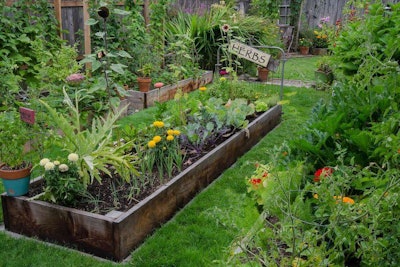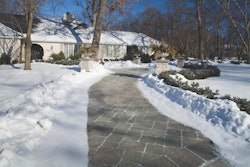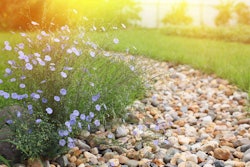
Herb gardens not only produce tasty plants that can be used in your customer’s cooking, they also create beautiful focal pieces in a landscape and leave tantalizing scents throughout the area.
Herbs play a crucial role within the walls of the kitchen, but they can also play an important part in a garden. Along with spicing up your customer’s culinary creations, herbs can also serve as a ground cover in the garden.
Having herbs surrounding the bottoms of other edible trees not only looks good, but it can also bring in pollinating insects.
There are many types of herb gardens, such as a cooking herb garden, medicinal, ornamental, knot, colonial, fragrant and windowsill to give a few examples. This gives your customers multiple options when choosing which type best fits their lifestyle and needs.
For more information on the different varieties of herb gardens and suggestions on which herbs your customers should choose, click here.
Location and soil prep
Herbs are fast-growing, so your customers won’t have to wait very long to get the tastes and smells they crave.
Depending on the type, herbs can thrive in the sun or shade, but the majority of them will require at least six or more hours of sunlight a day.
Customers may also want to keep the concept of convenience in mind when it comes to their herb garden, so consider planting near the kitchen or house to make it easier for them when it comes to harvest time.
Once the location is decided upon, it’s important to check the surrounding soil. Be sure that wherever these herbs are planted that they have well-drained soil, a good watering routine, and either a bit of compost or fertilizer around them.
If the soil is heavy with clay or is sandy, add an ample amount of compost to the mix, and even if the soil is in fairly good condition, working a bit of compost into the soil will help give it the added nutrition the herbs will need to grow.
However, be sure to avoid composted manures when growing an herb garden. Typically, these are high in nitrogen, which can help make herbs grow more quickly, but it can reduce the flavors they produce.
Choosing, planting, and growing
When it comes to choosing what herbs will go in the garden, it really comes down to the preference of your customers and what they will use their garden for.
Almost all herbs will grow for at least one season, and some can continue to grow year after year. A few of the most common herbs are rosemary, dill, mint, sage, basil, oregano, and chives.
When it comes to planting herbs, they can be started as plants or seeds. If your customers are wanting to hit the ground running and have their herb garden functioning fast, it’s a better idea to go ahead and use the already-matured plants. However, if your customers are fine with taking a little time and also saving a little bit of money, they can choose the seed option.
Once the herbs are planted, they should receive 2 inches of water every week, and remember to tell customers that the herbs need to be harvested frequently.
Some customers may be afraid that harvesting their herbs too quickly will hurt the plant, but this isn’t so. Frequent harvesting of herbs can help the plant produce more foliage, which also helps increase the amount your customers are able to harvest.










